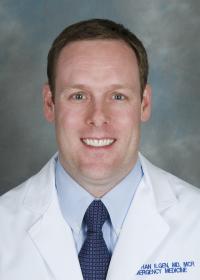Dr. Steven Mitchell Co-Founds Washington Medical Coordination Center

In the earliest days of the COVID-19 pandemic, an outbreak in a Kirkland, WA nursing home overwhelmed a regional hospital when 33 of 37 residents were transferred there over just 10 days. This crisis highlighted the need for coordinated patient distribution and proactive monitoring of high-risk settings.
To meet that need, Harborview’s role as the state’s long-standing Disaster Medical Coordination Center (DMCC) was expanded to establish the Washington Medical Coordination Center (WMCC). The WMCC was designed both to track outbreaks in congregate care facilities that could strain healthcare resources and to balance patient loads across hospitals statewide. It was co-founded by Dr. Steve Mitchell, now serving as Medical Director, and Mr. Mark Taylor, the Director of Operations.
Unlike DMCCs, which are typically activated for short-term acute incidents, the WMCC functions as an ongoing service. Its mission is to prevent individual hospitals—or small groups of hospitals—from becoming overwhelmed by coordinating patient placement across facilities with available capacity.
Originally launched as the Regional COVID-19 Coordination Center (RC3) to assist healthcare partners in western Washington, the WMCC quickly evolved to support all hospitals and healthcare facilities across the state. Today, the center coordinates nonemergency transfers from hospitals and long-term care facilities, whether moving several patients at once or assisting with smaller transfers as resources allow.
It also serves as a hub for decompressing hospitals at or beyond capacity by redistributing patients to facilities better able to absorb them. While the WMCC works closely with transfer centers and clinicians, it is not intended to replace internal hospital placement strategies; rather, it provides critical support when local resources are insufficient.
Before the pandemic, Washington had no system to track statewide bed capacity or monitor the burden of COVID-19 cases at the hospital level. To close this gap, Dr. Mitchell partnered with Microsoft, the Northwest Healthcare Response Network, and the Washington State Department of Health to create WA Health, a statewide data platform that supports the work of the WMCC and guides leaders and policymakers in their pandemic response.
WA Health now tracks all pandemic-related constrained resources, including staffing, beds (acute and critical care), ventilators, PPE, and vaccines. It is fully integrated with federal reporting systems to reduce duplication of data entry by hospitals.
Because of the WMCC’s work, Washington became the only state in the nation with a signed statewide agreement among healthcare chief executives. This agreement outlines the WMCC’s role and establishes a shared strategy for statewide level loading. The framework includes transparent data sharing, quality assurance processes, and a detailed methodology for balancing patient care across hospitals.
The WMCC is now recognized as a national model for disaster preparedness and response. Its leaders helped develop the HHS/ASPR Medical Operations Coordinating Cell Toolkit and, in partnership with the American College of Surgeons, created a guide for establishing regional coordination centers. These resources provide adaptable, practical guidance for state, local, tribal, and territorial governments to ensure that patients receive the highest possible level of care during times of health system stress.
As the acute impacts of COVID-19 may change, the WMCC is looking to the future. Its goal is to transition into a permanent coordination center, one that continues to support patient placement needs while strengthening Washington’s all-hazards preparedness and disaster response capabilities.
References:
- Morris, SC, Resnick AT, England SA, Stern SA, Mitchell SH. Lessons learned from COVID-19 outbreak in a skilled nursing facility, in Washington State. Journal of the American College of Emergency Physicians Open. 2020;1-6. https://doi.org/10.1002/emp2.12137
- Mitchell SH, Bulger EM, Duber HC, Greninger AL, Ong TD, Morris SC, Chew LD, Haffner, Sakata VL, Lynch JB, Western WA COVID-19 Expert Panel, Western Washington COVID-19 Experience: Keys to Flattening the Curve and Effective Health System Response. Journal of the American College of Surgery, 2020 Jun 16;S1072-7515(20)30488-9.
- https://files.asprtracie.hhs.gov/documents/aspr-tracie-mocc-webinar--4-2...
- https://files.asprtracie.hhs.gov/documents/fema-mocc-toolkit.pdf
- Stewart RM, Bulger EM, Epley E, Mitchell SH. How to Set Up a Regional Medical Operations Center to Manage the COVID-19 Pandemic. American College of Surgery website. April 3, 2020 [online clinical guidance, https://www.facs.org/covid-19/clinical-guidance/rmoc-setup]
For more information on WMCC, please visit the Northwest Healthcare Response Network website.








